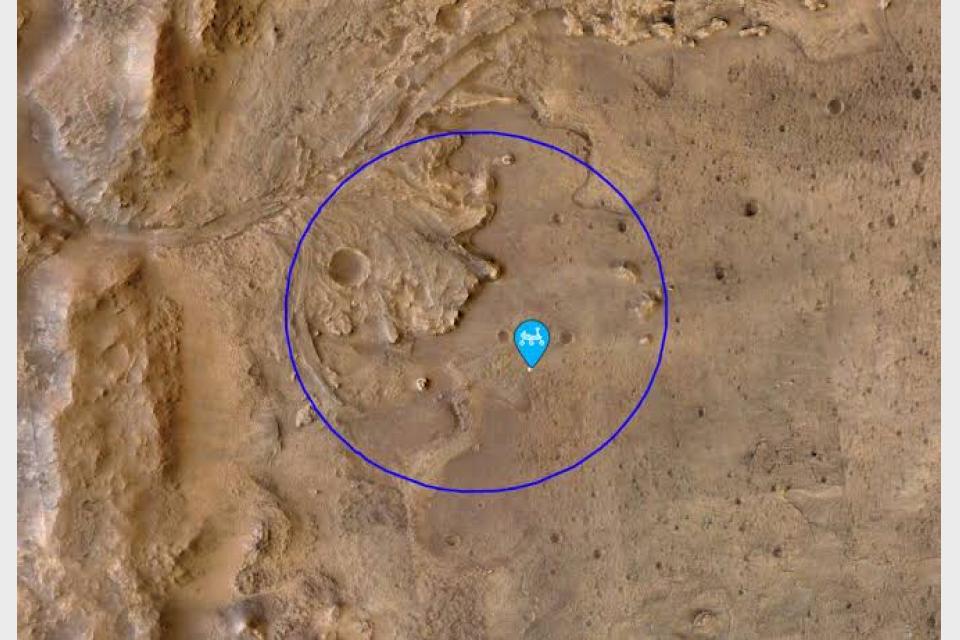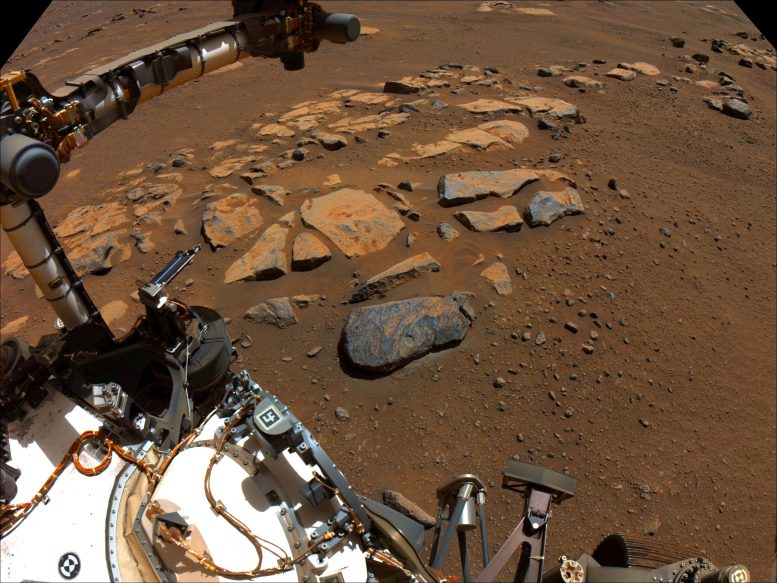NASA’s Perseverance rover took this image of the Martian rock nicknamed “Rochette” on August 27, 2021, shortly after it abraded a circular patch known as “Bellegarde.” Credit: NASA/JPL-Caltech
During the solar conjunction period, the project’s science and engineering teams have had time to digest the data from Perseverance collected since the rover landed in Jezero crater. While taking a step back from the normal routines of operating the rover and its fine set of instruments, we had the chance to reflect on what the rover and its team has accomplished.
Perseverance and its team have come a long way over the past 8 months of operation on the surface of Mars. Early in the mission, the team devotes much time and effort planning first time activities: the first drive, first use of science instruments, and first sample to name a few. These activities and developing efforts to enable them were daunting at first, as they are highly complex, requiring multiple onboard systems to collaborate. Now, it is part of the mission’s normal routine for the rover to collect rock samples and perform proximity science using the instruments mounted on the turret that sits at the end of the robotic arm/manipulator.
The robotic arm and turret constitute a highly stable and reliable platform that must support all percussion and abrasion tools while simultaneously supporting the two proximity instruments, PIXL and SHERLOC. Figuring out how to mount all these systems on the same platform was challenging, but with a clever mechanical design, a single shared platform was possible.
From this platform the PIXL instrument conducts its scientific Xray Fluorescence observations. PIXL emits a focused Xray beam of about 120 µm in diameter (as thin as a single strand of human hair!) and collects a fingerprint size map scan of measurements. For PIXL to achieve this, it constantly checks and self-adjusts the distance between the instrument and the targeted rock to maintain optimal focus of the Xray beam. This operation is much like threading a needle – requiring great precision and is performed relentlessly a few thousand times for each scan.










